- Benefits of Starting Cucumber Plants from Seedlings
- Faster Germination and Growth
- Disease Prevention
- 1. Reduced Soil-Borne Diseases
- 2. Early Detection and Treatment
- 3. Controlled Watering
- 4. Sterile Growing Medium
- Extended Growing Season
- Greater Control over Growing Conditions
- Increased Yield
- Easier to Manage Pests
- Optimal Plant Spacing
- Transplantability
- “Question-Answer”
- What are the benefits of planting cucumbers on seedlings?
- How do seedlings give a head start on the growing season?
- Why are seedlings better protected from pests and harsh weather?
- How do seedlings ensure stronger and more productive plants?
- Can I plant cucumbers directly in the ground instead of using seedlings?
- What are some tips for planting cucumbers on seedlings?
- “Video” Cucumbers will grow in a moment! Just pour this over the cucumber shoots!
If you’re a fan of cucumbers, you know that growing them can be a rewarding experience. However, deciding whether to plant cucumbers directly in the ground or start them as seedlings can be a tough decision. There are several benefits to planting cucumbers on seedlings rather than directly in the ground, and in this article, we’ll explore some of those advantages.
1. Earlier harvest
One of the main benefits of planting cucumbers on seedlings is that it allows you to have an earlier harvest. By starting cucumbers indoors as seedlings, you can give them a head start in their growth process. This means you can enjoy delicious cucumbers earlier in the season, giving you a longer window for enjoying their fresh taste in salads, pickles, or snacks.
2. Better control over growing conditions
When you plant cucumbers on seedlings, you have more control over the growing conditions compared to planting them directly in the ground. You can ensure they receive the optimal amount of water, sunlight, and nutrients to thrive. This gives you the opportunity to create the ideal environment for your cucumbers, leading to healthier plants and a higher yield.
3. Protection from pests and diseases
Another advantage of planting cucumbers on seedlings is that it provides added protection from pests and diseases. Young seedlings can be kept indoors or in a greenhouse, where they are less likely to be affected by harmful insects or diseases. By keeping your cucumbers on seedlings until they are stronger, you can reduce the risk of damage and increase the chances for a successful harvest.
Overall, planting cucumbers on seedlings offers several benefits, including an earlier harvest, better control over growing conditions, and protection from pests and diseases. While there are some challenges to starting cucumbers on seedlings, such as the need for extra care and attention, the advantages often outweigh the disadvantages. Give it a try and see how this method can enhance your cucumber-growing experience!
Benefits of Starting Cucumber Plants from Seedlings
- Stronger and Healthier Plants: Starting cucumber plants from seedlings ensures that the plants are young, healthy, and vigorous. Seedlings are typically grown in controlled environments where they receive optimal conditions for growth, including temperature, humidity, and light. This results in stronger and healthier plants that will have a better chance of thriving once transplanted into the garden.
- Earlier Harvest: By starting cucumber plants from seedlings, you can give them a head start and enjoy an earlier harvest. Seedlings are started indoors before the last frost date, allowing them to develop and grow for a few weeks before the outdoor planting season begins. This early start can lead to an earlier harvest, giving you cucumbers to enjoy sooner in the growing season.
- Protection from Pests and Diseases: Cucumber seedlings are usually started indoors or in a greenhouse, which provides a controlled environment that helps protect them from pests and diseases. When cucumbers are directly sown in the ground, they are more vulnerable to pests, such as slugs or cutworms, and diseases, such as cucumber mosaic virus or powdery mildew. By starting with seedlings, you can minimize the risk of these issues and give your cucumbers a healthier start.
- Better Space Management: Growing cucumber seedlings allows for better space management in the garden. Cucumbers are known for their sprawling vines, which can take up a lot of space if directly sown in the ground. By starting with seedlings, you can control the placement of the plants and train them to grow on trellises or supports, maximizing the use of vertical space and creating a tidier garden layout.
- Increased Yield: Starting cucumber plants from seedlings can result in an increased yield. Seedlings are carefully nurtured and given the optimal conditions for growth, which can lead to healthier plants and higher fruit production. Additionally, by starting with seedlings, you can select the healthiest and strongest plants to transplant, increasing the chances of a successful and abundant harvest.
In summary, starting cucumber plants from seedlings offers several benefits, including stronger and healthier plants, an earlier harvest, protection from pests and diseases, better space management, and increased yield. Consider starting your cucumber plants from seedlings to give them the best chance for success in your garden.
Faster Germination and Growth
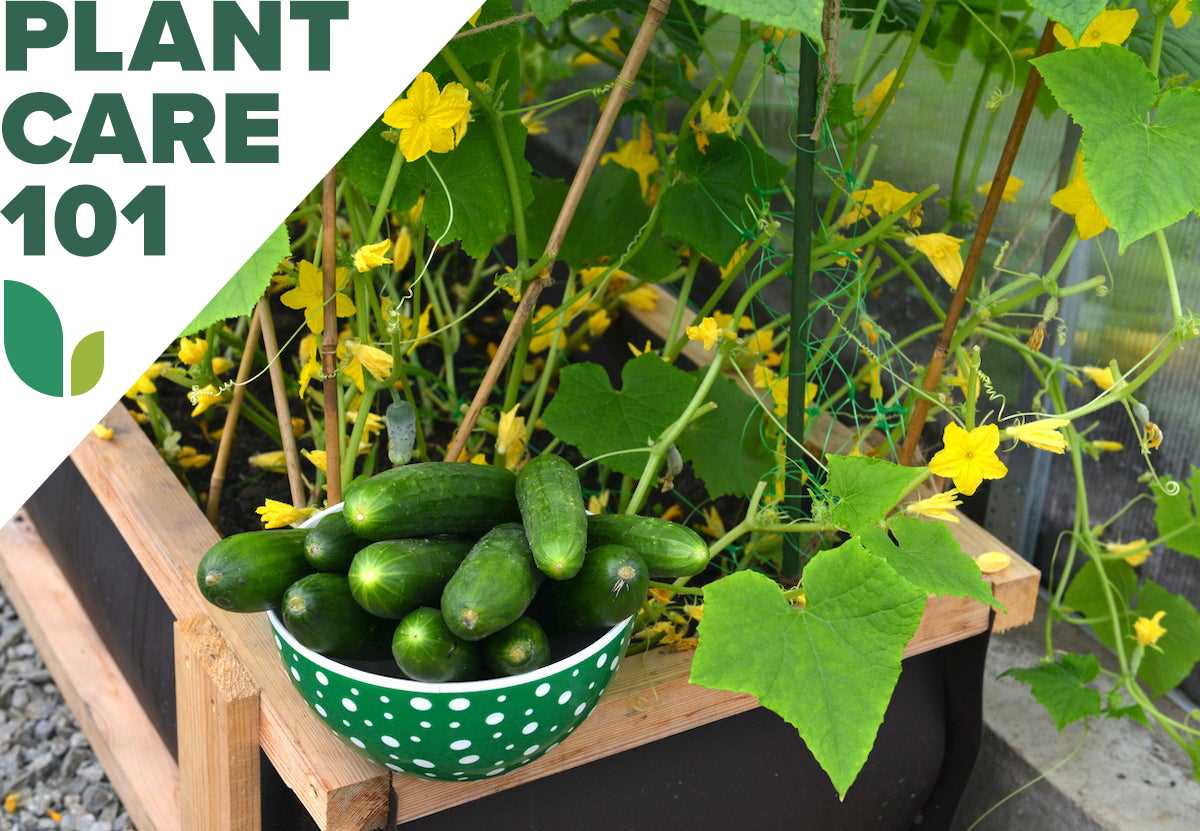
Planting cucumbers on seedlings rather than directly in the ground can result in faster germination and growth. When cucumbers are started indoors as seedlings, they have a controlled environment in which to develop and grow. This controlled environment provides optimal conditions for germination, such as consistent temperature, moisture, and light.
By starting cucumbers as seedlings, you can ensure that the seeds are placed in the ideal conditions for germination. This can lead to quicker and more successful germination compared to planting seeds directly in the ground, where environmental factors may not be as controlled.
Once the cucumbers have germinated and sprouted as seedlings, they can be transplanted into the ground. At this stage, they already have a head start in terms of growth and development. Seedlings may have a more established root system, allowing them to absorb nutrients and water more efficiently from the soil.
In addition to faster germination, planting cucumbers on seedlings can also result in faster overall growth. The early start and development of seedlings means that the cucumbers can begin producing fruit sooner. This can be especially beneficial for gardeners in areas with shorter growing seasons or climates that are not ideal for cucumber growth.
Overall, planting cucumbers on seedlings rather than in the ground allows for faster germination and growth. By providing optimal conditions for germination and a head start in growth, seedlings can lead to earlier fruit production and a more successful cucumber harvest.
Disease Prevention
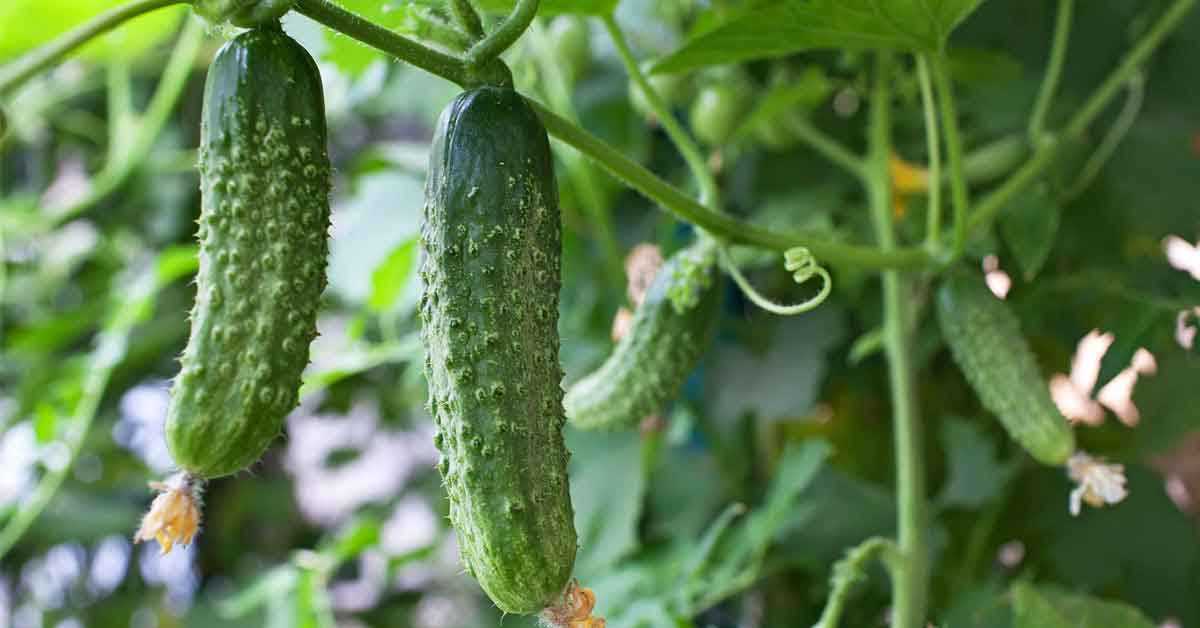
Planting cucumber plants on seedlings rather than directly in the ground has several benefits when it comes to disease prevention.
1. Reduced Soil-Borne Diseases
When cucumber plants are started indoors as seedlings, they are less exposed to soil-borne diseases such as damping-off, root rot, and fusarium wilt. These diseases are often caused by various fungi and bacteria present in the soil. By starting the plants indoors, you can provide a clean and controlled environment, minimizing the risk of infection.
2. Early Detection and Treatment
When cucumbers are grown on seedlings, it is easier to detect and treat any signs of disease early on. Seedlings are typically grown in a smaller space, making it easier to closely monitor their health. Early detection of diseases allows for prompt treatment, reducing the chances of the disease spreading and causing significant damage to the plants.
3. Controlled Watering
When cucumbers are planted on seedlings, you have more control over their water requirements. Overwatering can lead to the development of certain diseases, such as powdery mildew. By controlling the watering regime, you can prevent excess moisture from accumulating around the plants, reducing the likelihood of disease development.
4. Sterile Growing Medium
Seedlings are typically grown in a sterile growing medium, such as potting mix or seed starting mix. This sterile environment helps prevent the introduction of diseases that may be present in the natural soil. By starting cucumbers in a sterile medium, you minimize the risk of the plants being infected by soil-borne pathogens.
| Disease | Symptoms |
|---|---|
| Damping-off | Seedlings become weak and may rot at the base |
| Root rot | Roots become discolored and may rot, leading to plant wilting |
| Fusarium wilt | Leaves wilt, turn yellow, and eventually die |
| Powdery mildew | White powdery patches develop on leaves |
In conclusion, planting cucumber plants on seedlings rather than directly in the ground offers advantages in terms of disease prevention. It reduces the risk of soil-borne diseases, allows for early detection and treatment, enables controlled watering, and provides a sterile growing medium. By taking these precautions, you can increase the chances of having healthy and productive cucumber plants.
Extended Growing Season
Planting cucumbers on seedlings rather than directly in the ground can help extend the growing season. By starting seeds indoors, you can get a head start on the growing season, allowing your plants to establish strong roots and develop before being exposed to the elements.
When cucumbers are planted on seedlings, they can be transplanted outside once the threat of frost has passed and the soil has warmed up. This allows you to plant cucumbers earlier in the season, giving them more time to grow and produce a bountiful harvest.
Additionally, planting cucumbers on seedlings gives you greater control over the growing conditions. You can provide optimal temperature and light conditions indoors, ensuring that your cucumbers receive the necessary warmth and sunlight for healthy growth. This is especially beneficial in cooler climates or areas with short growing seasons.
By starting cucumbers on seedlings, you can also protect them from pests and diseases that may be present in the soil. Seedlings can be started in sterile potting mix, reducing the risk of soil-borne diseases and allowing for a healthier start for your plants.
Overall, starting cucumbers on seedlings can help extend the growing season and provide a more controlled and protected environment for your plants. This can result in healthier, more vigorous plants and a longer and more productive harvest of cucumbers.
Greater Control over Growing Conditions
- Temperature: When planting cucumbers on seedlings rather than directly in the ground, you have greater control over the temperature. Cucumber plants prefer warm temperatures, typically between 70°F and 85°F (21°C to 29°C). By starting the plants indoors, you can maintain these optimal temperatures more easily, ensuring healthy growth.
- Humidity: Cucumbers thrive in high humidity environments. By starting them as seedlings, you can create a more controlled and humid environment, which is not always possible in outdoor conditions. This helps keep the plants hydrated and promotes healthy growth.
- Moisture: Planting cucumbers on seedlings allows you to carefully monitor and control the moisture levels in the soil. Seedlings are more sensitive to over-watering or under-watering, and by starting them indoors, you can provide the right amount of moisture as needed. This prevents issues like root rot or dehydration, which can be detrimental to the plants’ health.
- Light: Cucumbers require ample sunlight to grow and produce fruits. By planting them on seedlings, you can position the containers near windows or under grow lights to ensure they receive sufficient light. This way, you have better control over their exposure to sunlight, especially during cloudy or darker days.
- Pests and Diseases: Starting cucumbers on seedlings indoors can help protect them from pests and diseases. By keeping them in a controlled environment, you can minimize the risk of infestation or infection. Additionally, you can take preventive measures like treating the soil before planting to reduce the chances of encountering common cucumber diseases or pests.
Increased Yield
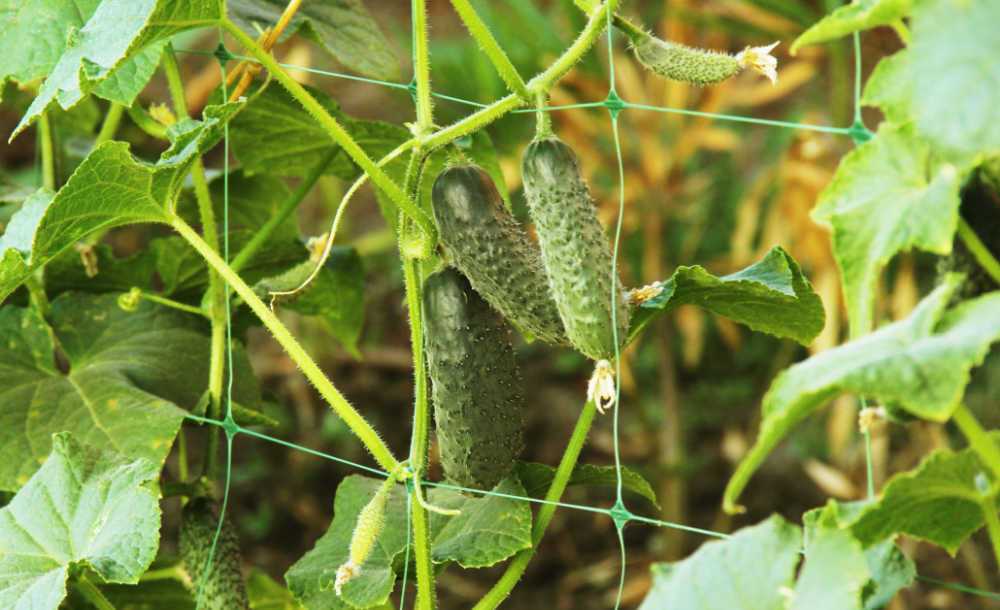
Planting cucumbers on seedlings rather than directly in the ground can significantly increase the yield of your crop. When cucumbers are started indoors as seedlings, they have a head start in terms of growth. Seedlings can be carefully nurtured and provided with optimal growing conditions, allowing them to establish a strong root system and develop sturdy stems before being transplanted into the garden.
This early start gives the seedlings a better chance of survival and growth compared to cucumbers that are directly sown in the ground. By transplanting the seedlings at the right time, you can ensure that they are well-established and ready to take advantage of the warmer weather and longer growing season.
Transplanting cucumbers also allows for better control over their spacing, which can lead to an increased yield. When plants are spaced evenly and given enough room to grow, they can develop properly and avoid competing for nutrients and sunlight. This results in healthier and more productive plants.
In addition, planting cucumbers on seedlings allows for the use of trellises or other vertical supports. By training the cucumber plants to grow vertically, you can maximize space in the garden and promote better air circulation around the leaves, reducing the risk of diseases. This vertical growth also makes it easier to harvest the cucumbers and helps prevent them from rotting on the ground.
Furthermore, transplanting cucumbers onto seedlings provides an opportunity to choose the strongest and healthiest seedlings for planting. By selecting the best seedlings, you can ensure that only the strongest plants make it into the garden, resulting in a higher overall yield.
In conclusion, planting cucumbers on seedlings rather than directly in the ground offers several benefits, including increased yield. By starting cucumbers indoors as seedlings, you can give them a head start, provide better growing conditions, control spacing, utilize vertical supports, and select the strongest plants. All these factors contribute to a higher crop yield and a more successful cucumber harvest.
Easier to Manage Pests
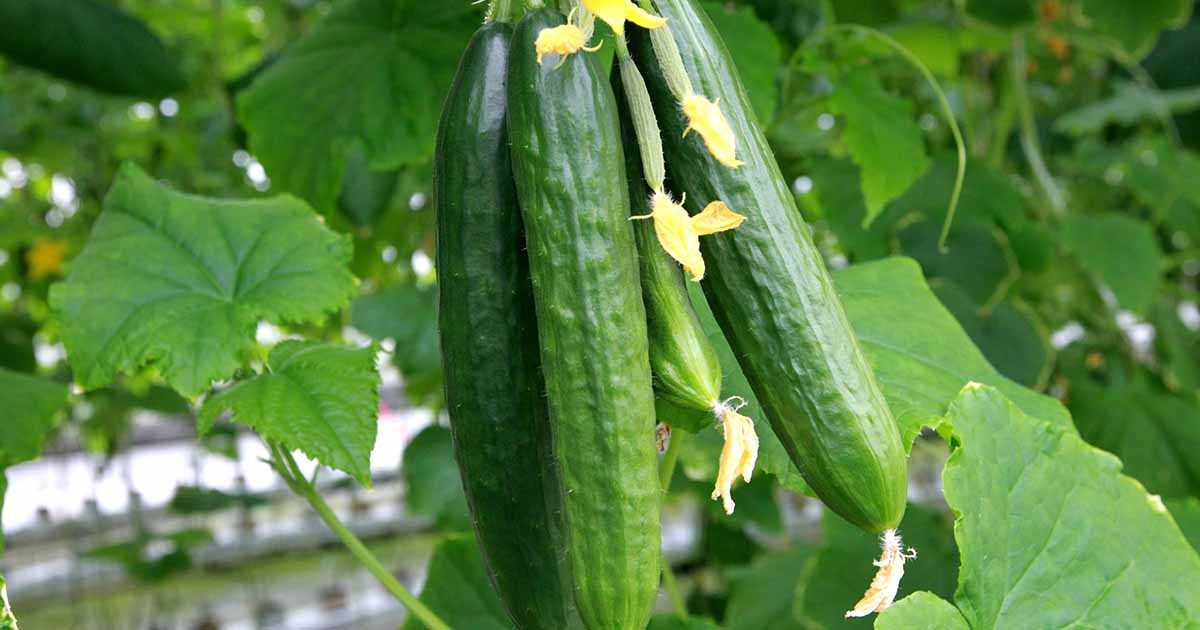
Planting cucumbers on seedlings rather than directly in the ground can make it easier to manage pests that commonly affect these plants. By starting cucumbers indoors or in a greenhouse, you have more control over the environment and can implement pest prevention strategies more effectively.
One of the main advantages of starting cucumbers on seedlings is that it allows you to closely monitor and protect the plants from common pests such as aphids, cucumber beetles, and spider mites. When cucumbers are planted directly in the ground, it can be more difficult to spot pest infestations early on, resulting in potential damage to the crop.
When raising cucumbers on seedlings, you can take proactive measures to prevent pest infestations. For example, you can use organic pest control methods such as releasing beneficial insects like ladybugs or lacewings, or using natural repellents and insecticidal soaps. By keeping the cucumbers in a controlled environment, it is easier to apply these pest management techniques and reduce the risk of damage to the plants.
Additionally, starting cucumbers on seedlings allows for easier inspection and treatment of any signs of pests. You can closely examine the leaves, stems, and fruits for any signs of infestation and take immediate action to prevent further damage. This level of supervision and intervention is often more challenging when cucumbers are in the ground, especially when they are sprawling and have dense foliage.
In conclusion, planting cucumbers on seedlings instead of directly in the ground makes it easier to manage pests. With better control over the environment and the ability to closely monitor the plants, you can implement pest prevention strategies more effectively and reduce the risk of damage by common cucumber pests.
Optimal Plant Spacing
The proper spacing between cucumber plants is essential for their healthy growth and maximum yield. When planting cucumbers on seedlings rather than in the ground, it is important to adhere to the recommended plant spacing to ensure proper air circulation, sunlight exposure, and efficient use of available resources.
Here are some guidelines for optimal plant spacing when planting cucumbers on seedlings:
- Space the seedlings approximately 12-24 inches apart, depending on the variety of cucumber. Compact bush varieties may require spacing of 12-18 inches, while vining or climbing varieties may need spacing of 18-24 inches.
- Allow enough space between the rows to provide easy access for watering, pruning, and harvesting. A spacing of 36-48 inches between rows is recommended.
- Consider the growth habit of the cucumber plants. Vining or climbing varieties may require trellising or support structures, which should be taken into account when determining the overall spacing requirements.
- Ensure that each seedling has sufficient room to develop a strong root system and access to sunlight. Overcrowding can lead to competition for nutrients and light, resulting in stunted growth and decreased productivity.
In addition to proper plant spacing, regular thinning of cucumber seedlings can also help promote healthy growth. Thinning involves removing excess seedlings and leaving only the strongest ones. This practice helps prevent overcrowding and allows the remaining seedlings to receive the necessary resources for optimal development.
By following the recommended plant spacing guidelines and practicing proper thinning techniques, you can ensure that your cucumber plants thrive and produce a bountiful harvest.
Transplantability
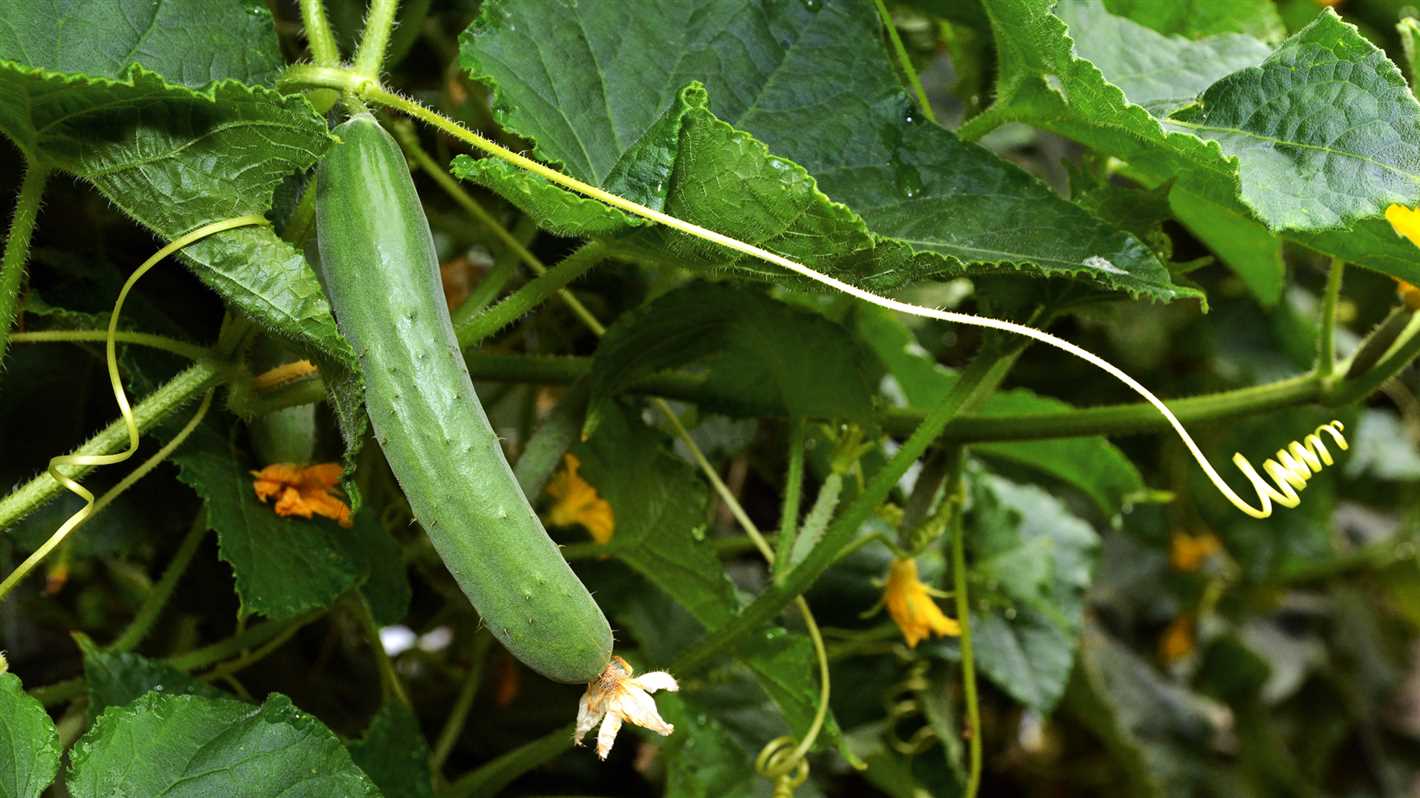
One of the main benefits of planting cucumbers on seedlings rather than directly in the ground is the increased transplantability of the seedlings. Transplanting cucumber seedlings allows for greater control over the growing conditions and provides the opportunity to start the plants indoors in a controlled environment before moving them outdoors.
Transplanting cucumber seedlings allows for a longer growing season, as they can be started indoors several weeks before the last frost date. This allows the plants to establish a strong root system and develop a head start before being exposed to external elements. Additionally, transplanting seedlings allows for quicker and more uniform germination and growth.
Transplanting cucumber seedlings also provides the opportunity to select the strongest and healthiest plants for transplantation. By starting the seeds indoors, it is easier to monitor their growth and choose the best candidates for transplanting. This helps to ensure that only the strongest and healthiest plants are selected, leading to more successful growth and higher yields.
Furthermore, transplanting cucumber seedlings allows for easier weed and pest control. By starting the plants indoors, they can be monitored and protected from pests and diseases before being moved outside. This helps to minimize the risk of damage from pests and diseases and increases the chances of a healthy and successful crop.
Overall, the increased transplantability provided by planting cucumbers on seedlings rather than directly in the ground offers numerous advantages. It allows for a longer growing season, selection of the strongest plants, and better control over pests and diseases. By starting seedlings indoors, growers can ensure a successful and productive cucumber harvest.
“Question-Answer”
What are the benefits of planting cucumbers on seedlings?
Planting cucumbers on seedlings has several benefits. Firstly, it allows you to get a head start on the growing season as seedlings can be started indoors earlier. Secondly, seedlings have a better chance of survival as they are protected from pests and harsh weather. Lastly, planting on seedlings ensures that you have stronger and more productive plants.
How do seedlings give a head start on the growing season?
Seedlings give a head start on the growing season because they can be started indoors several weeks before the last frost date. This allows the cucumbers to establish their roots and gain strength before being transplanted into the ground. As a result, you will have a longer growing season and can enjoy your cucumbers earlier in the year.
Why are seedlings better protected from pests and harsh weather?
Seedlings are better protected from pests and harsh weather because they can be grown in controlled environments such as greenhouses or indoor seed trays. This helps to prevent damage from insects, diseases, and extreme weather conditions. By giving the cucumbers a safe and controlled environment to grow in, you increase their chances of survival and overall health.
How do seedlings ensure stronger and more productive plants?
Planting cucumbers on seedlings ensures stronger and more productive plants because they have a better chance of establishing a healthy root system. When cucumbers are directly planted in the ground, they may face competition from weeds and have to deal with less than ideal soil conditions. By starting them as seedlings, you can provide them with nutrient-rich soil and optimal growing conditions, resulting in stronger and more productive plants.
Can I plant cucumbers directly in the ground instead of using seedlings?
Yes, you can plant cucumbers directly in the ground without using seedlings. However, there are several advantages to planting on seedlings. It gives you a head start on the growing season, provides protection from pests and harsh weather, and ensures stronger and more productive plants. If you have the option, it is recommended to start cucumbers on seedlings for better results.
What are some tips for planting cucumbers on seedlings?
When planting cucumbers on seedlings, it is important to choose a well-draining soil mix and containers with good drainage. Start the seeds indoors 3-4 weeks before the last frost, keeping them in a warm and well-lit area. Transplant the seedlings into larger pots once they have developed a few true leaves. Harden off the seedlings by gradually exposing them to outdoor conditions before planting them in the ground. Water regularly and provide support as the plants grow.







